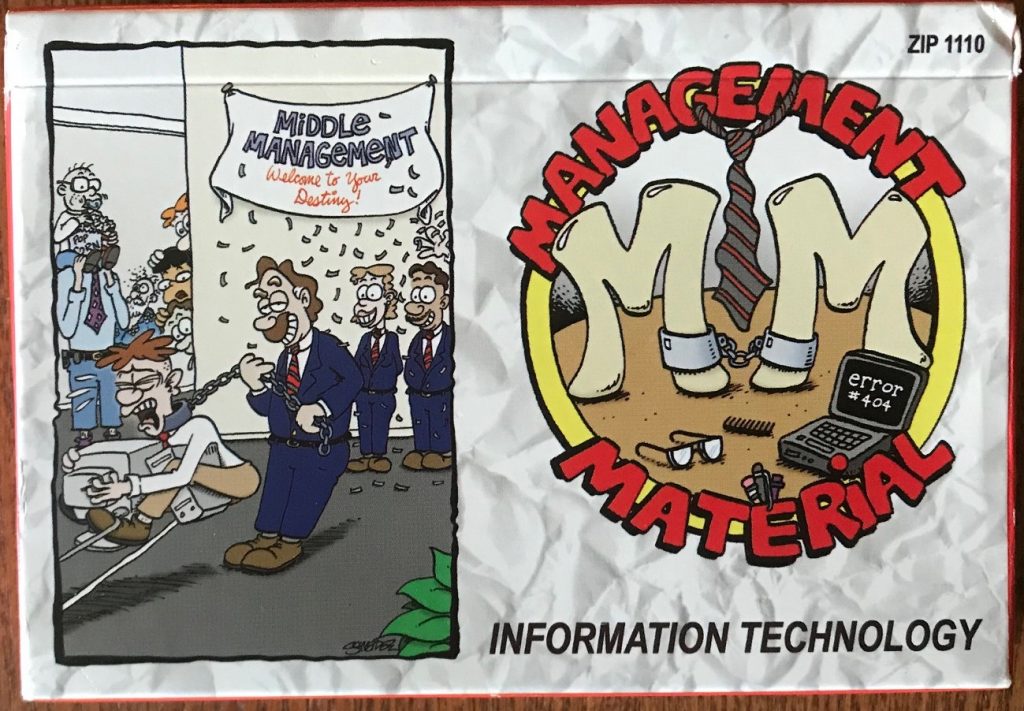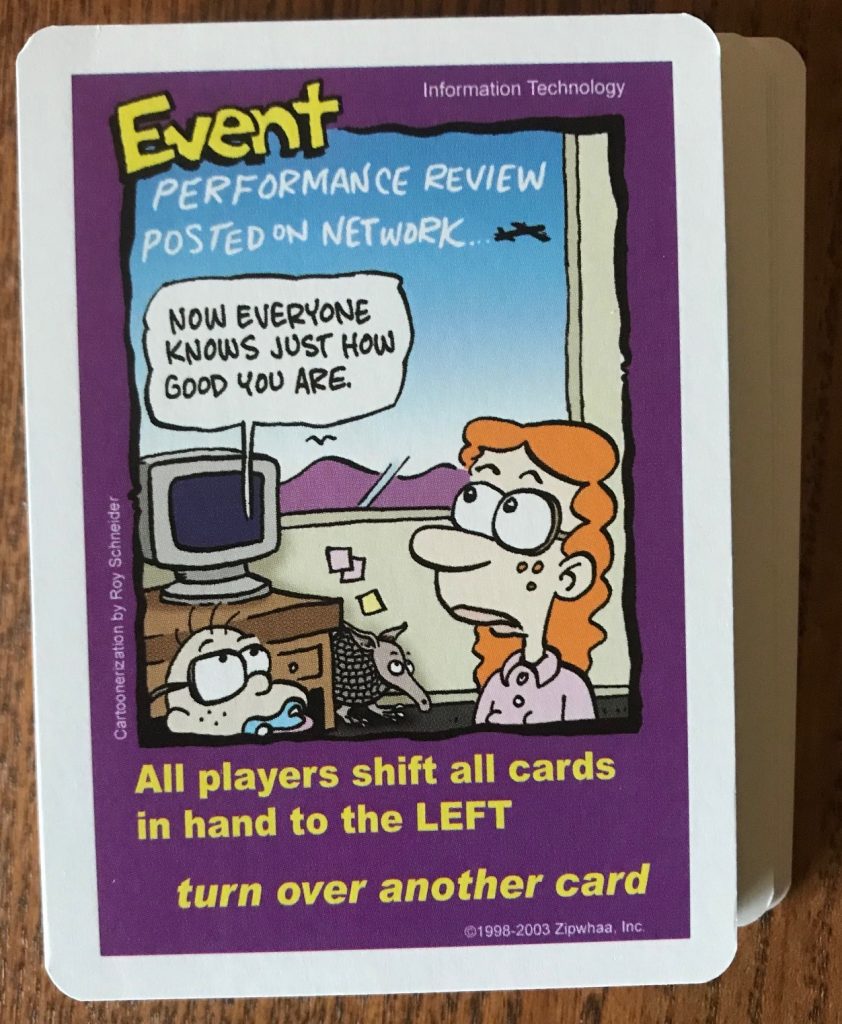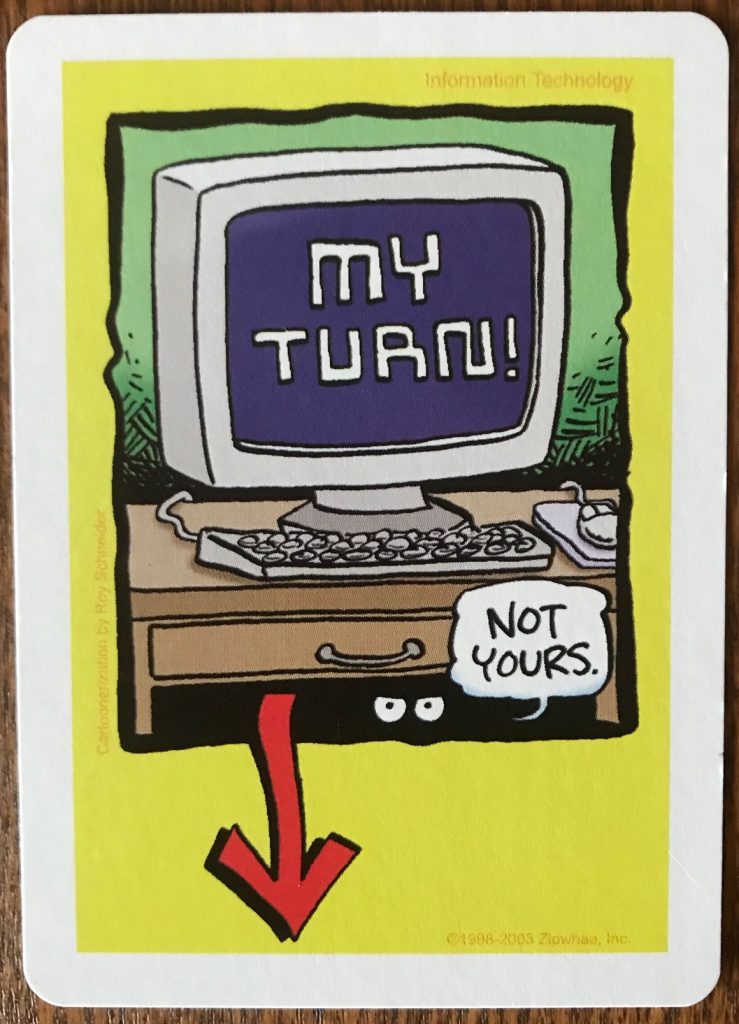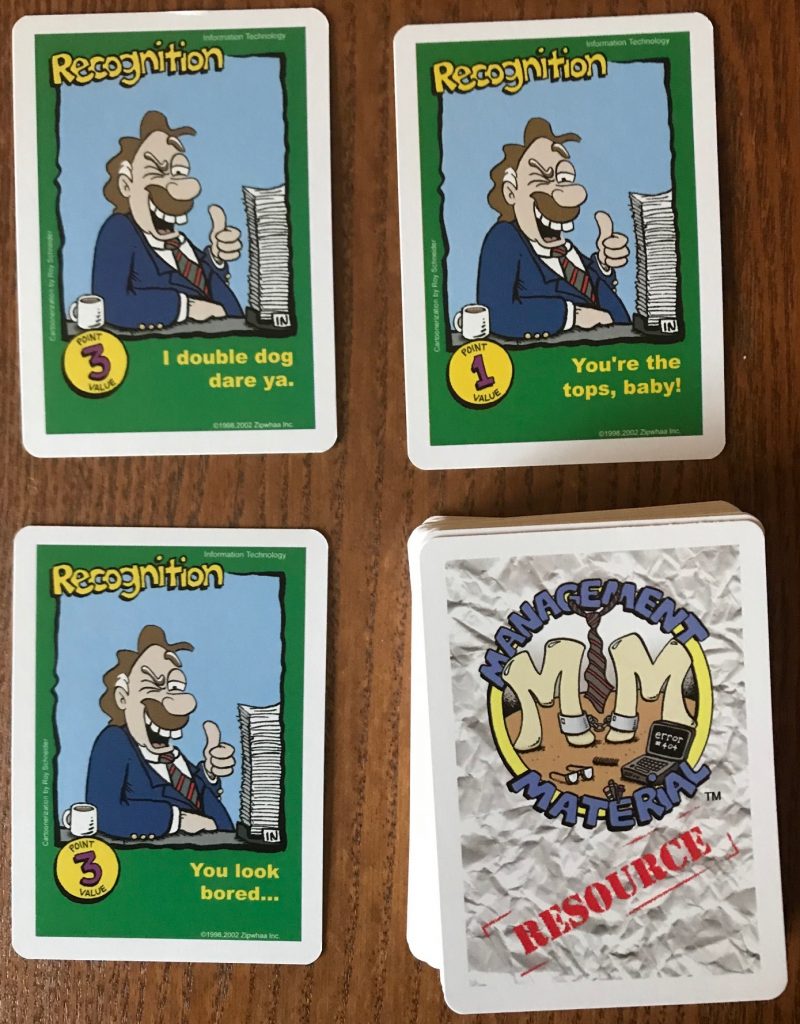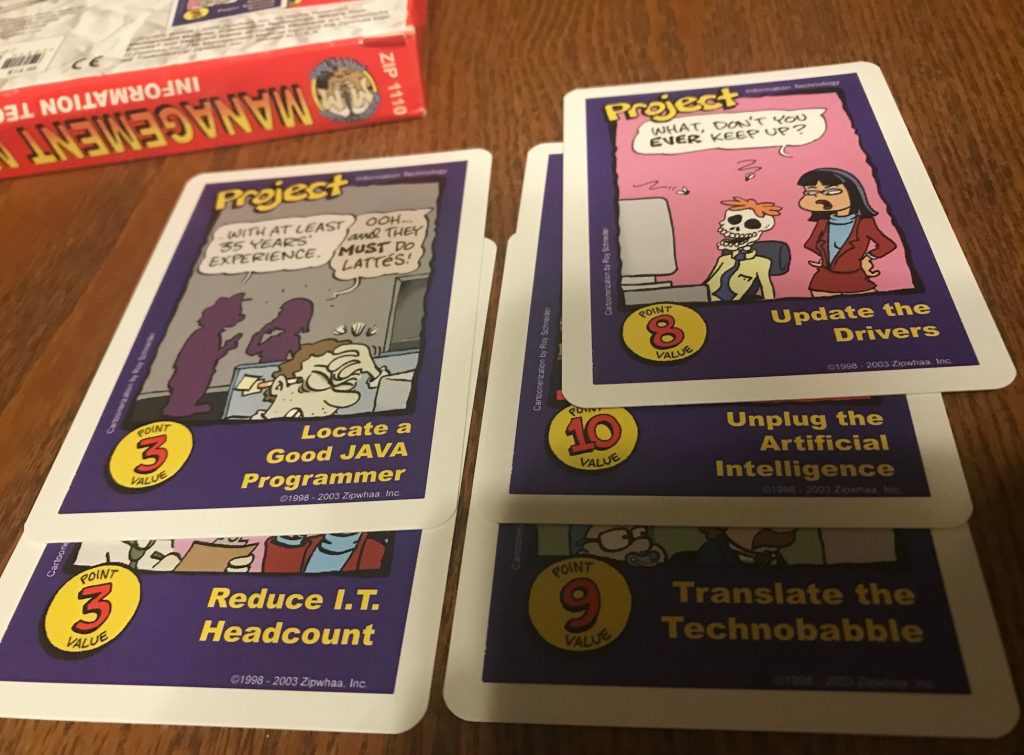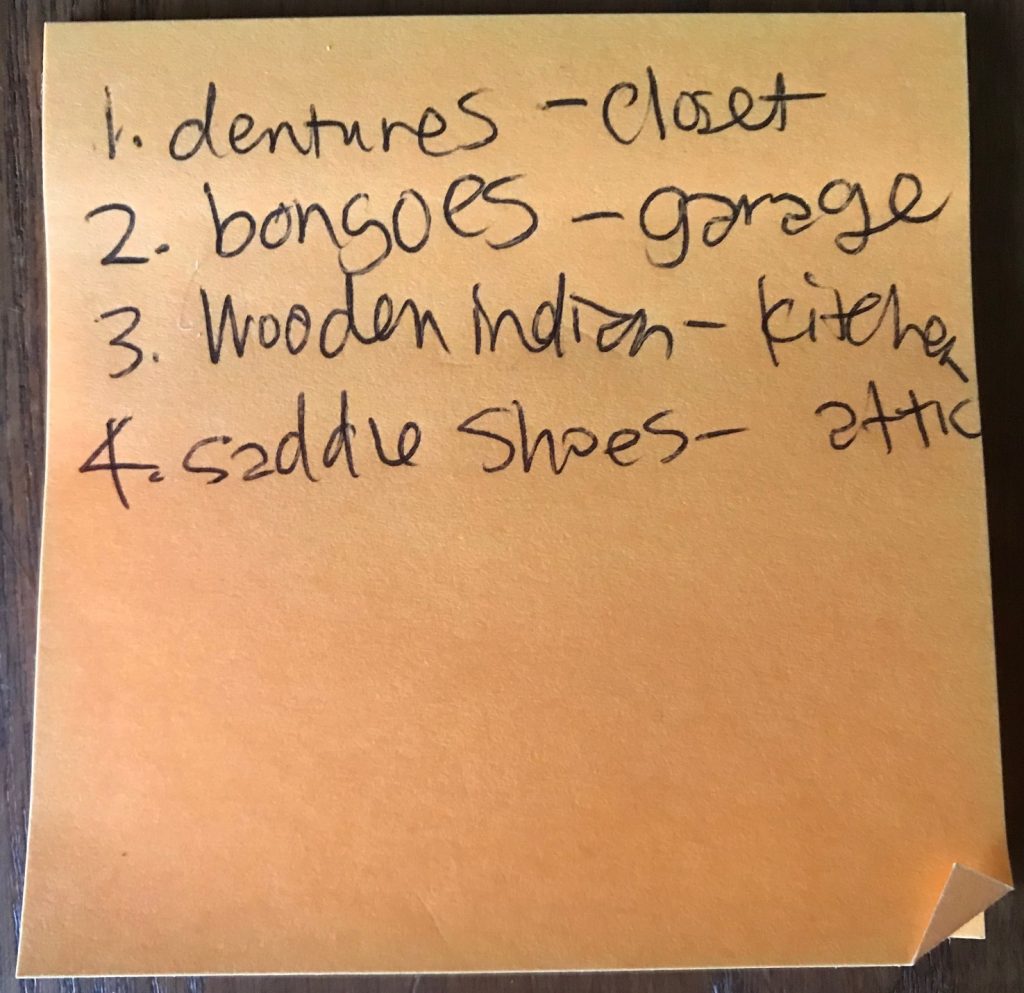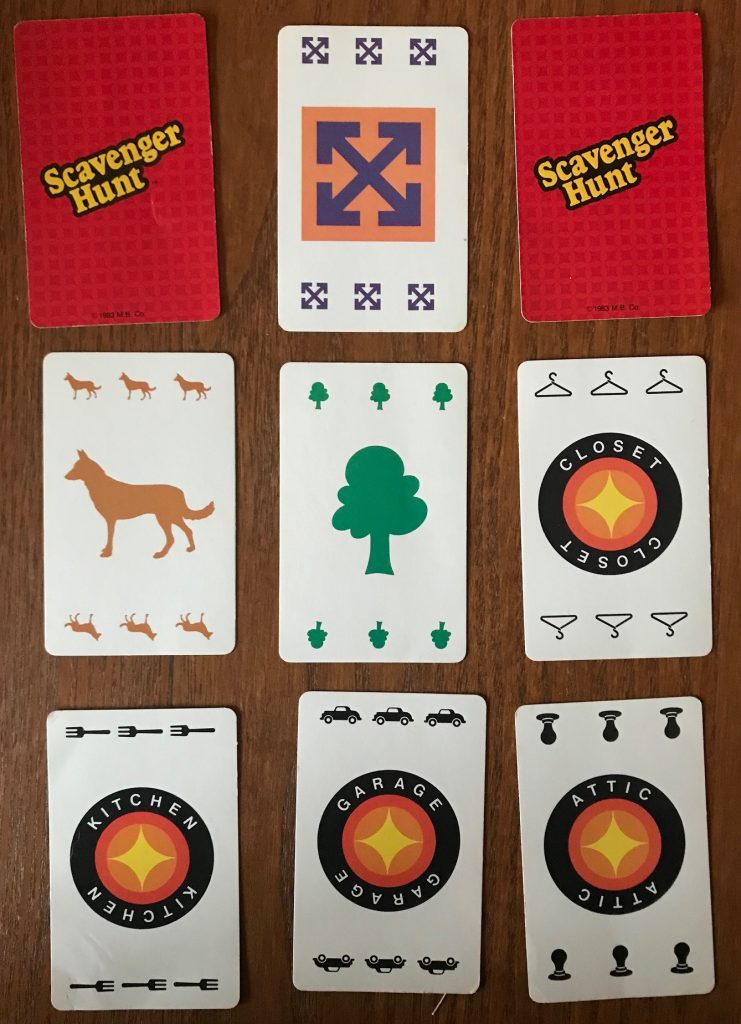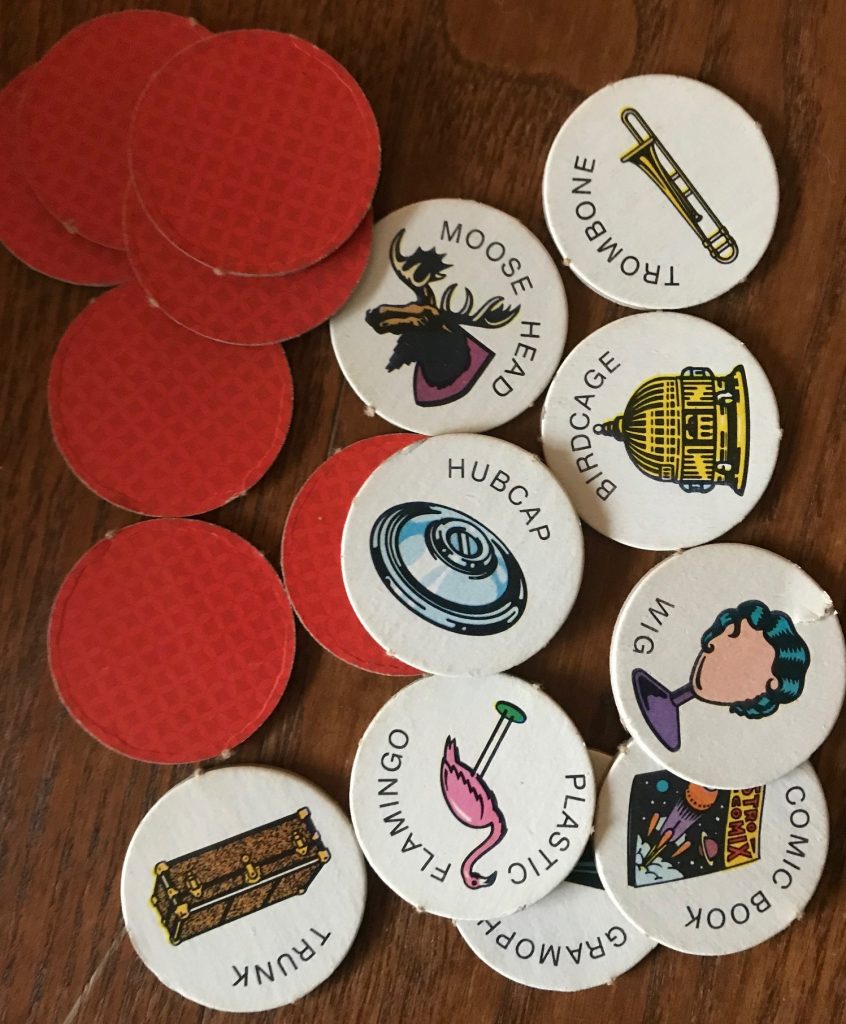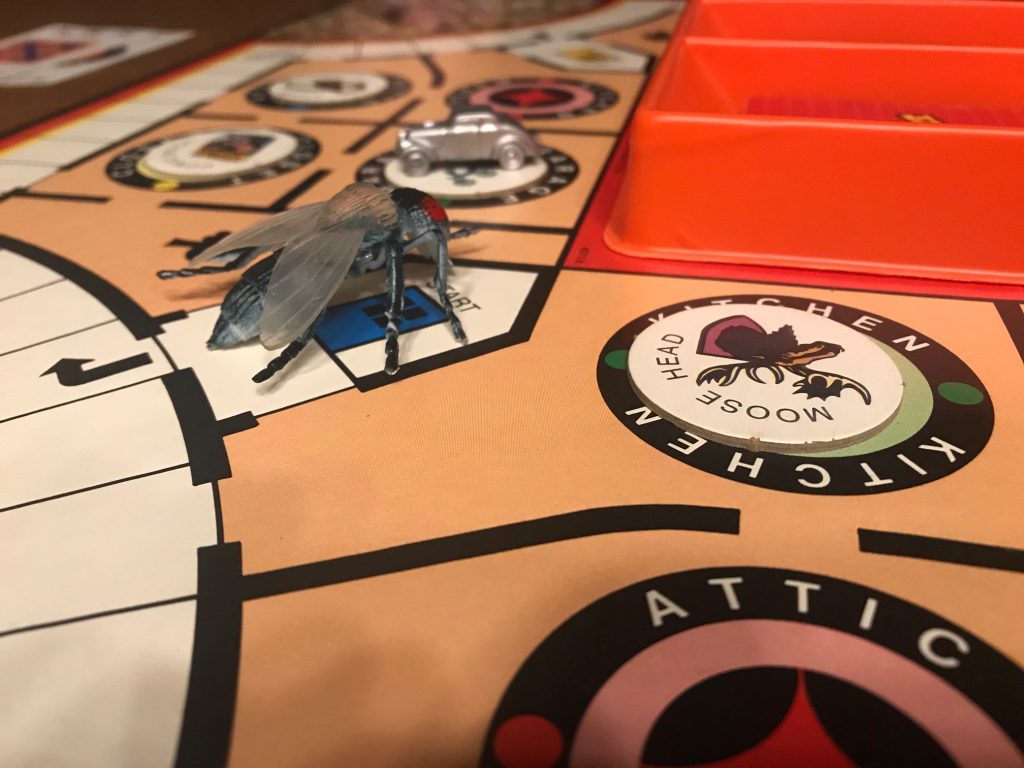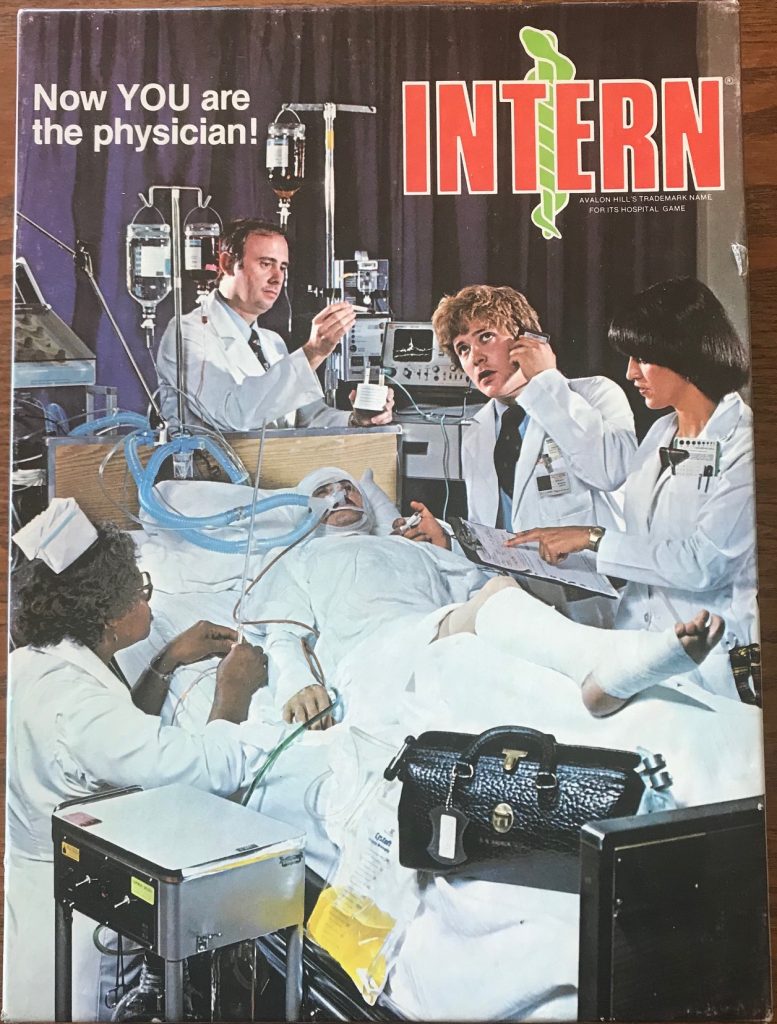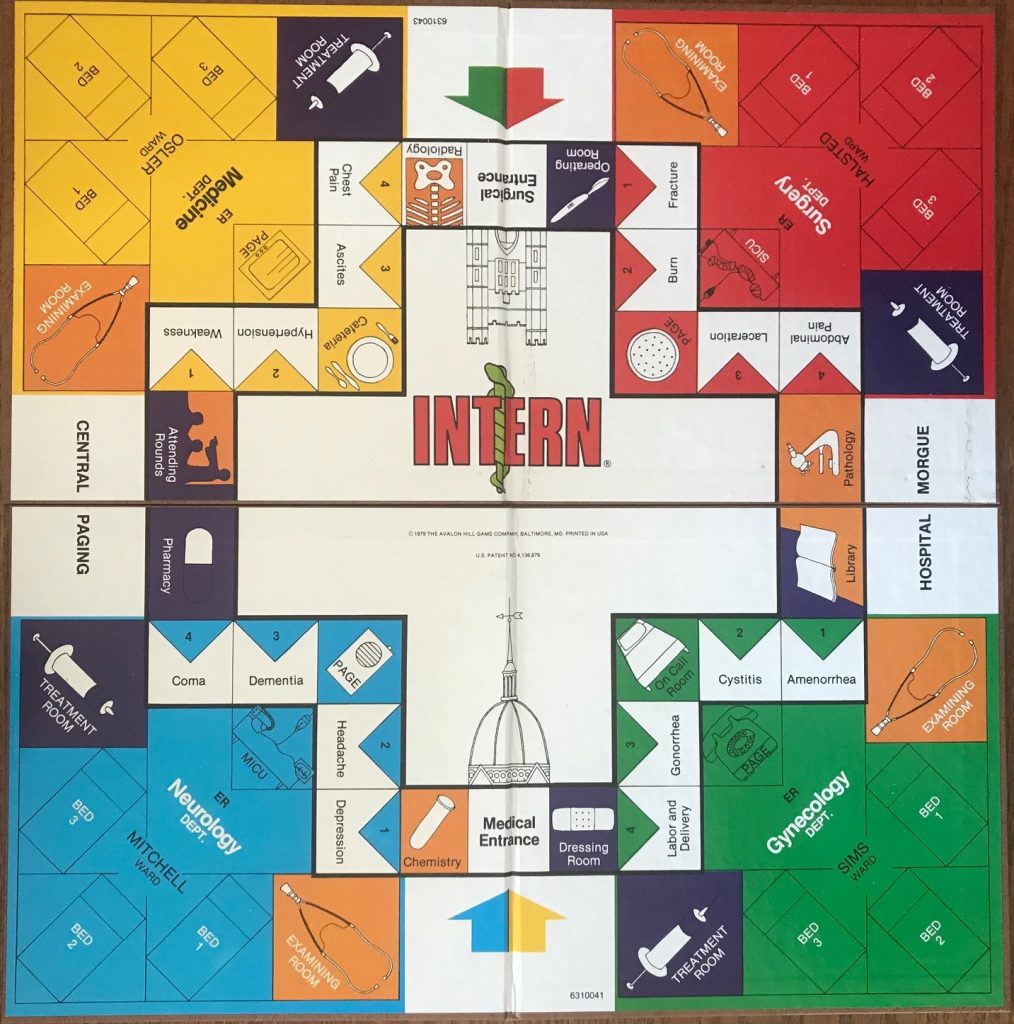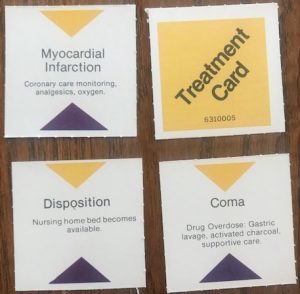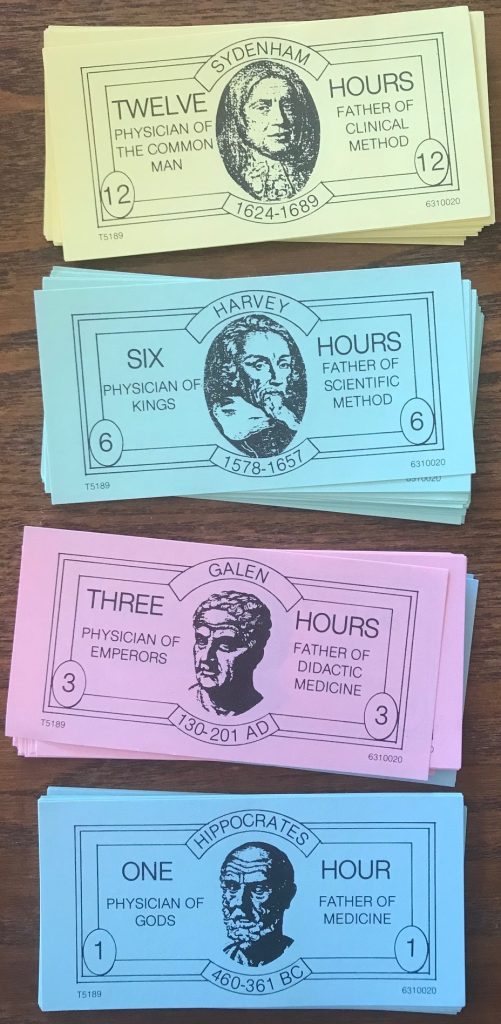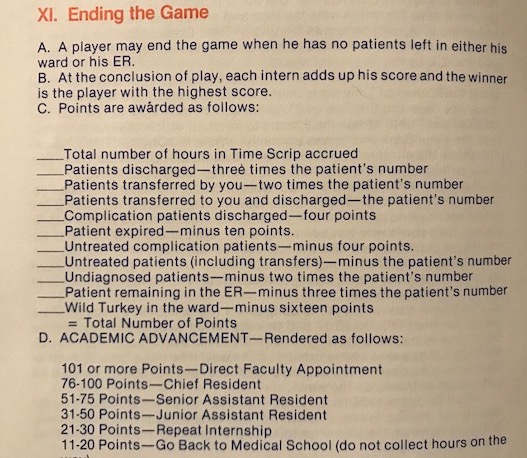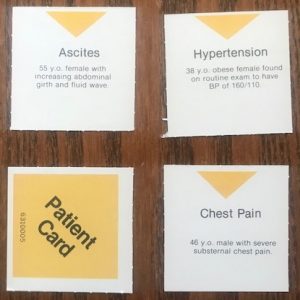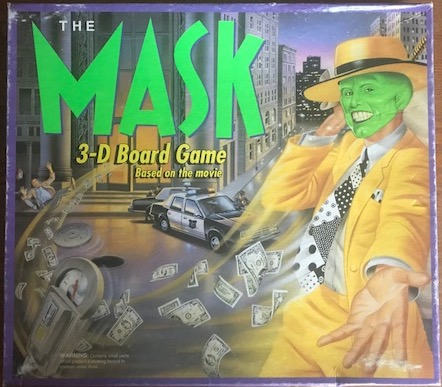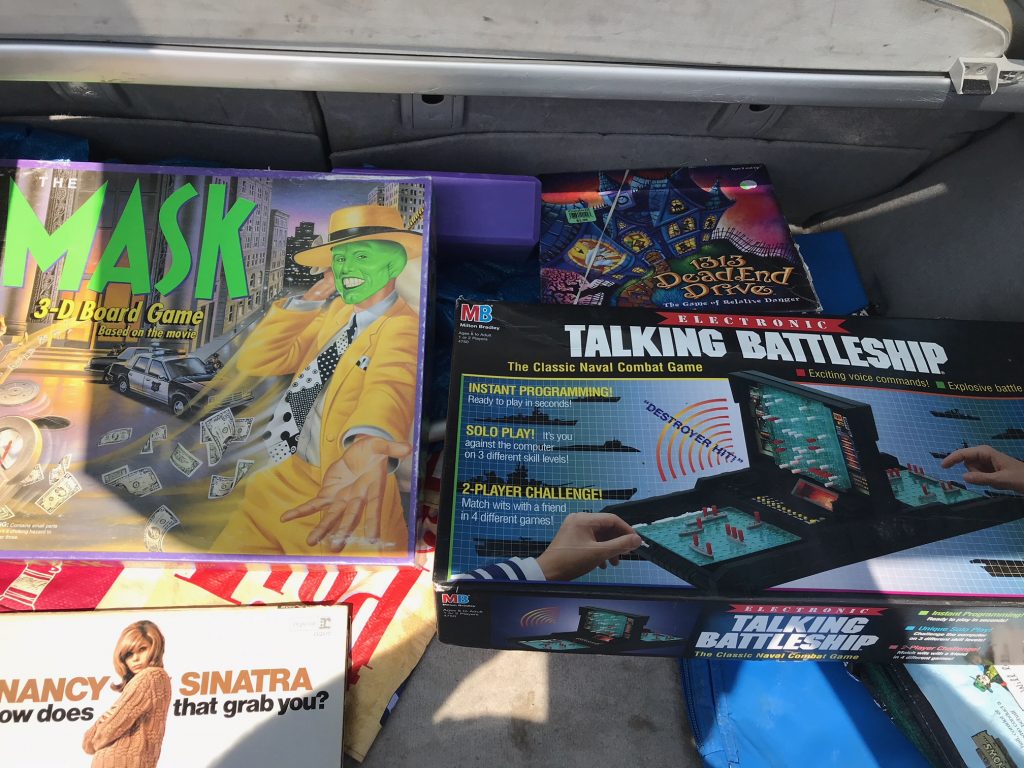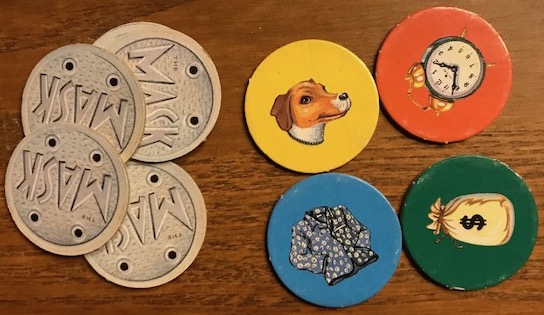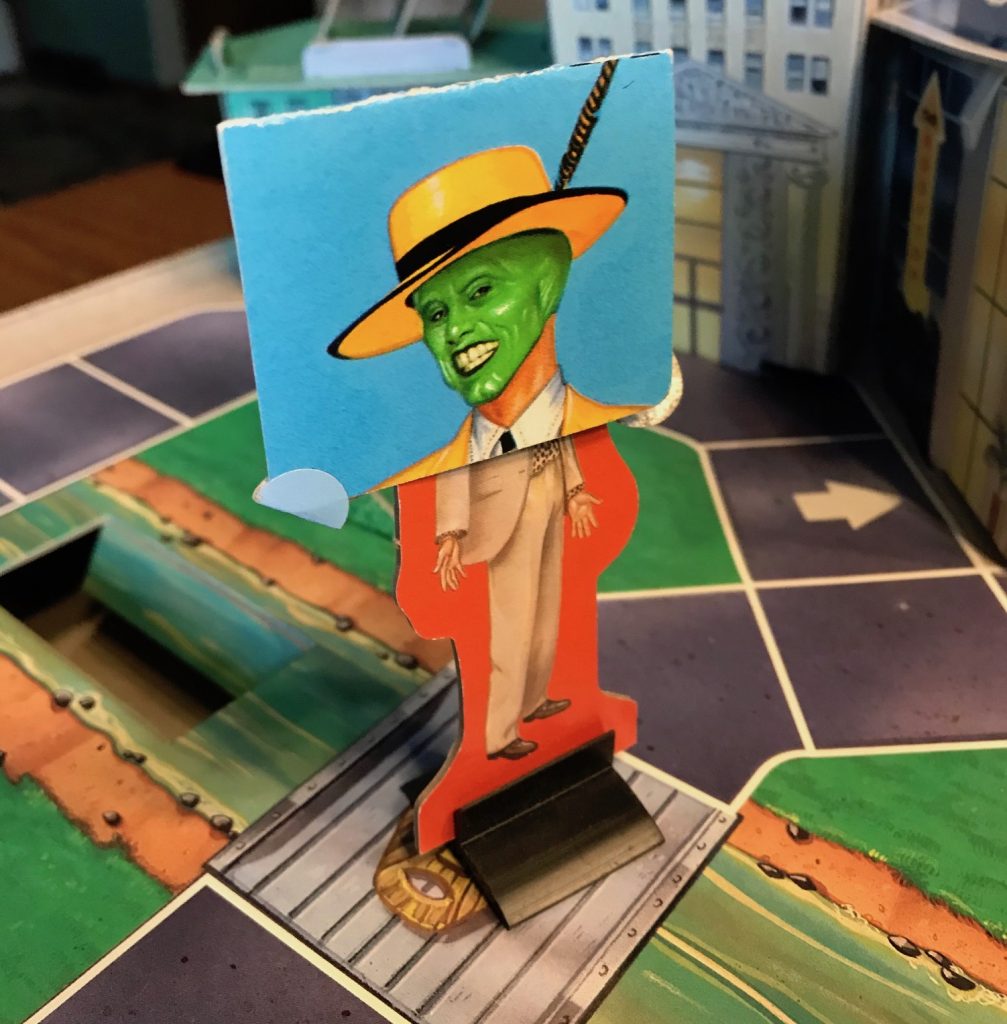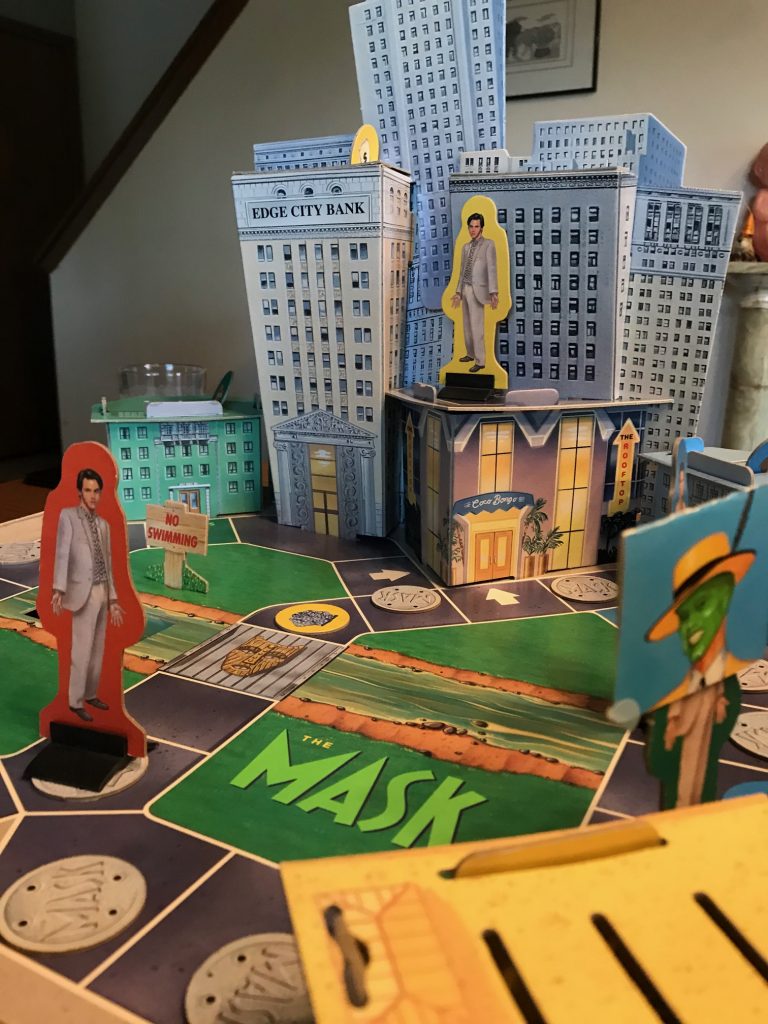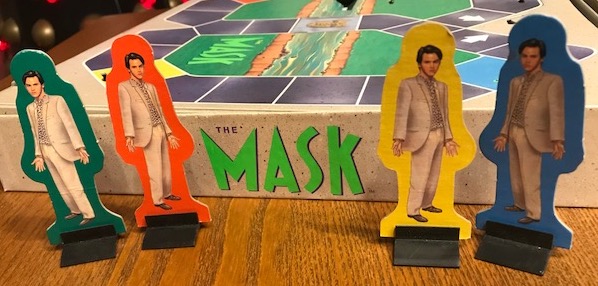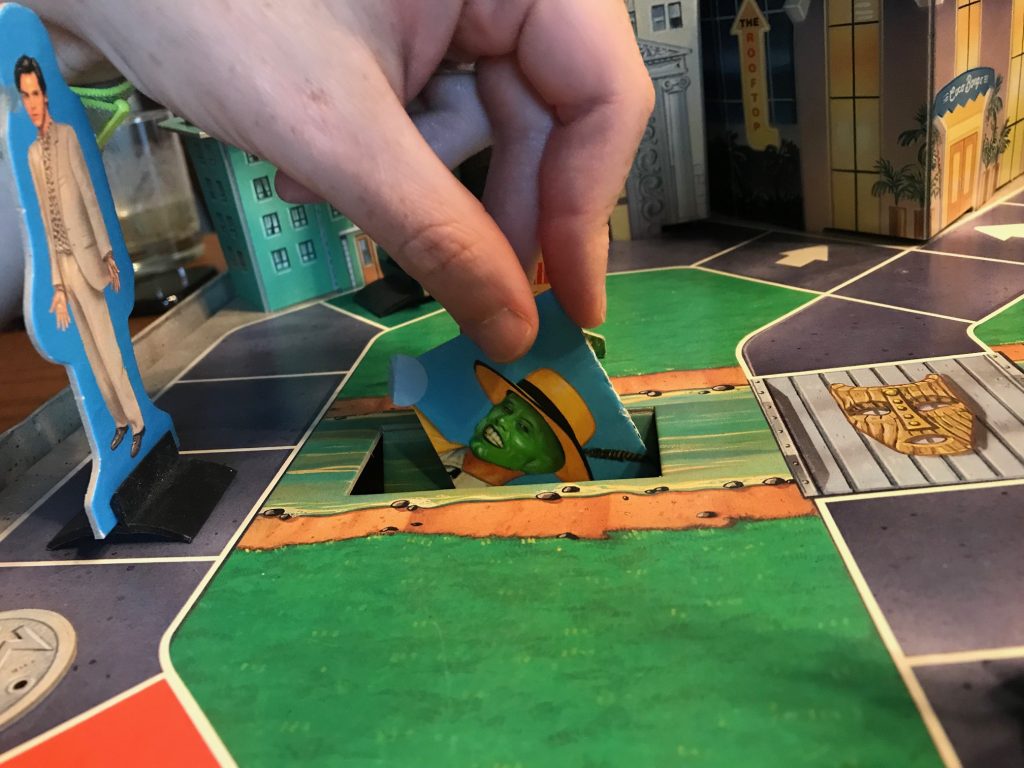Review: Happy Festivus
Publisher: Aquarius
Year: 2017
Tagline: IT’S A FESTIVUS MIRACLE

how we met
I don’t remember when we bought Happy Festivus or that it had any kind of interesting tale behind it. Bill is a fan of Seinfeld, and I like Seinfeld okay. Playing a board game based on the premise of a single episode of an old sitcom is right up Idle Remorse’s alley. The fact that it was created in 2017 based on an episode that first aired in 1997 really drove home that we needed to buy the game when finding it at thrift.
FUN FACT: Did you know that Festivus existed prior to the Seinfeld episode? According to Wikipedia, it was originally created by author Daniel O’Keefe, whose son would later co-write the Seinfeld episode where Festivus was introduced to the wider world.
how it plays
Happy Festivus is a roll and move game with the goal to collect four Festivus TICKETS by winning four FEATS OF STRENGTH and landing your Festivus pole pawn in the middle of the board to successfully take on the ULTIMATE FEAT OF STRENGTH. Throughout play, you will also encounter Festivus miracles and the opportunity to do some AIRING OF GRIEVANCES.
Players collectively choose and write down four FEATS OF STRENGTH at the start of play and number them one through four. We mostly chose from the suggested items in the rules and had high roll, low roll, rock paper scissors and stand on one foot with eyes closed the longest. But you can pick anything that you are willing to participate in!
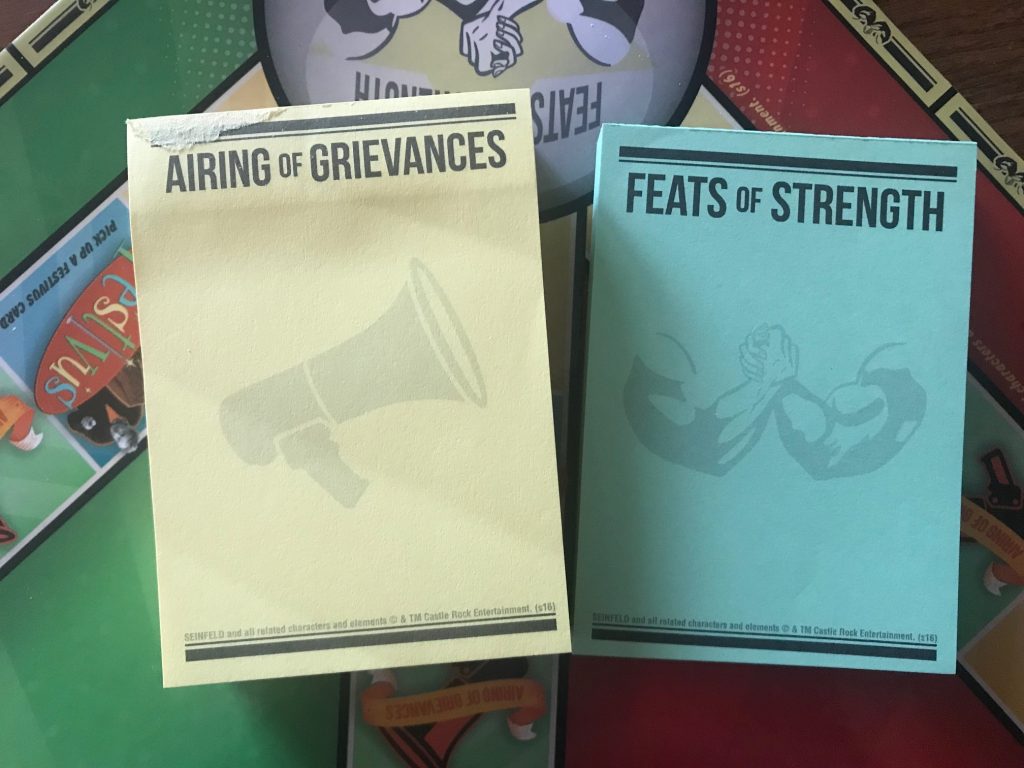
When a pawn lands on FEATS OF STRENGTH, they draw a Festivus TICKET from the pile and reveal its number. These TICKETs have numbers already on the backs of them, so this will tell you which FEAT OF STRENGTH you must do. Then other players raise their hand to challenge you, and you choose your opponent from these volunteers. If you win the match, you keep the TICKET and are that much closer to winning. If you lose the match, no bigs and play moves to the next player’s turn. If no one volunteers, you get that TICKET for free!
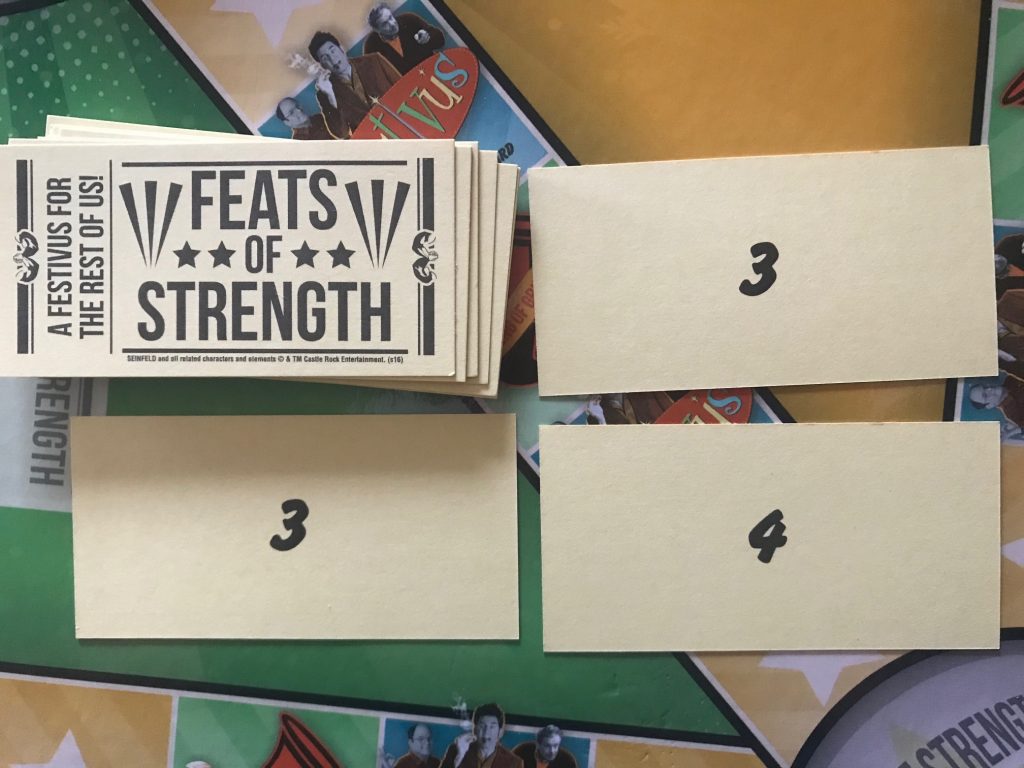
The AIRING OF GRIEVANCES space allows a player to write a grievance on a little sticky note and read it aloud while sticking it on the player that caused the grievance. The idea is to let your fellow players know how they have let you down in the past year.
Other spaces on the board cause you to draw a Festivus card that may force your pawn to move or get you a free TICKET or other random things. The board also contains safe spaces.

The first player to successfully collect four Festivus TICKETs and win the ULTIMATE FEAT OF STRENGTH wins! It’s a Festivus miracle!
how it went
As luck would have it, we had a guest for this game night so we played with five players. I had never met this poor man before. We were playing The Chicken Grand Slam game when he showed up and I pulled out Happy Festivus next, but he stayed anyway and so perhaps will join us more often. What better way to make a guest feel welcome than to air grievances together?
FUN FACT: if you google Festivus the results page has a Festivus pole along the entire page of search results!
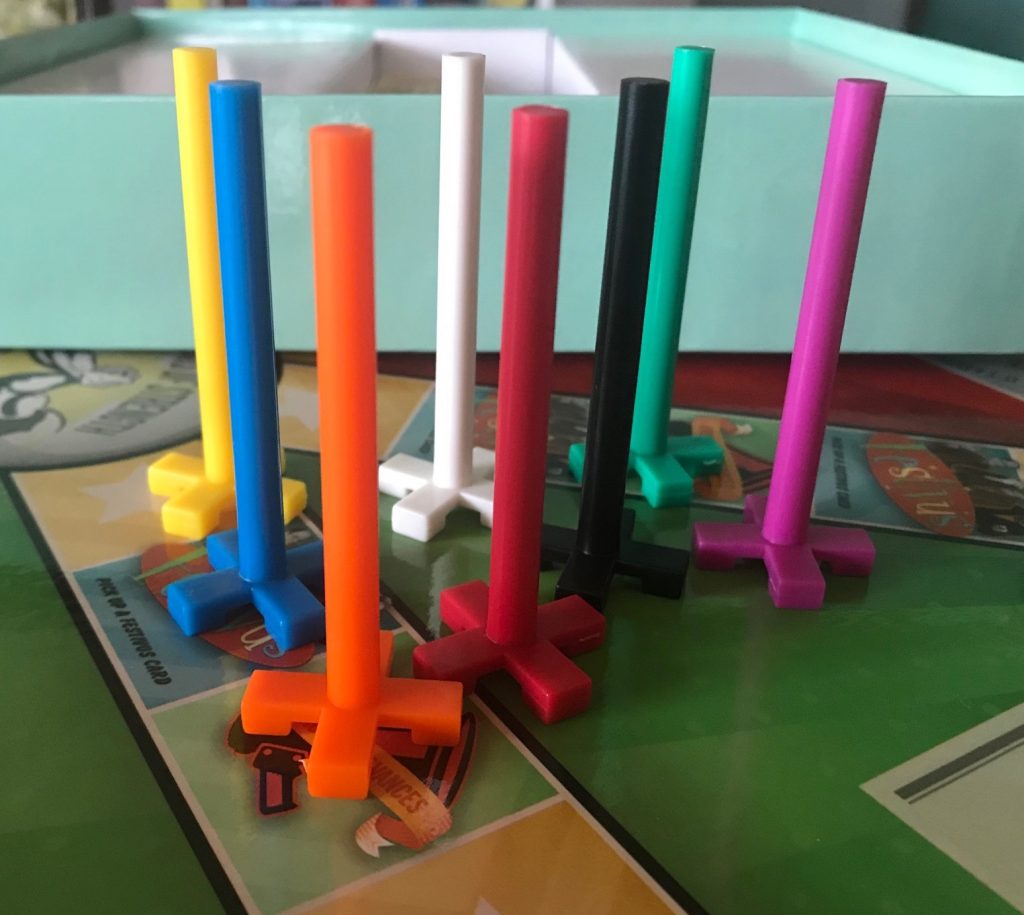
We were conservative in our choices of FEATS OF STRENGTH, so the rest of this game was just rolling and moving and bitching about each other. And we hadn’t gamed in a few weeks really, so I think we were in a particularly heady mood.
There is not much to say about the gameplay, though. We moved our pawns around the board and challenged each other in FEATS OF STRENGTH. I volunteered every time, I do believe. When I was challenged I sometimes won and sometimes lost.
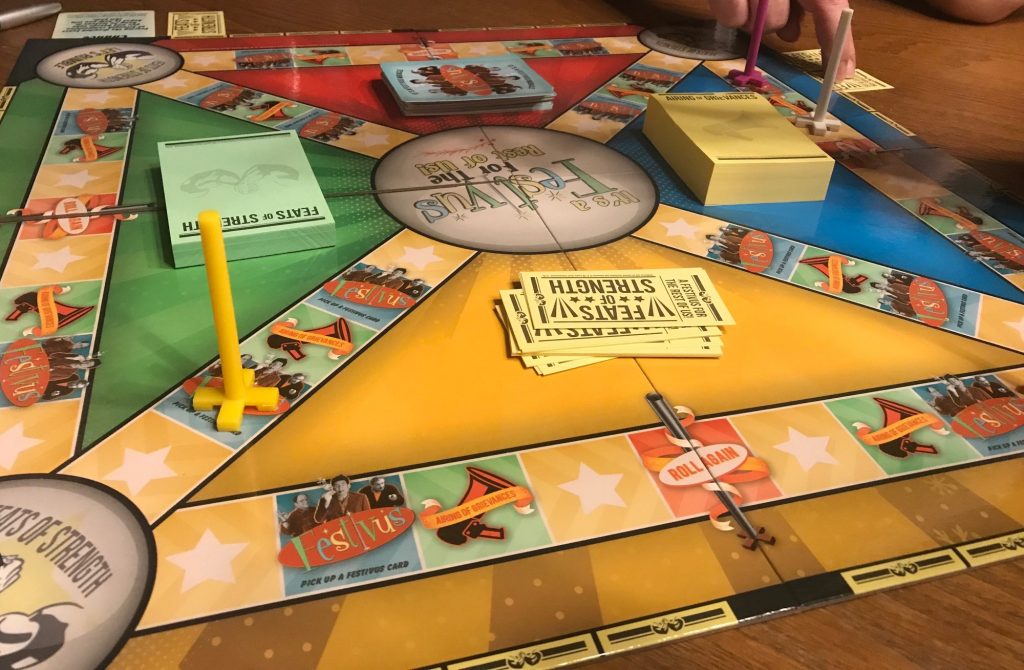
As a game group, we were very willing and able participants in the AIRING OF GRIEVANCES portion of gameplay. When I informed the group that we would be writing down our grievances, tearing them off, sticking them on someone and reading them aloud they were delighted. Even our new gamer participated by calling John out on a couple of things, although he is the only one I would have described as hesitant in his grievance airing.
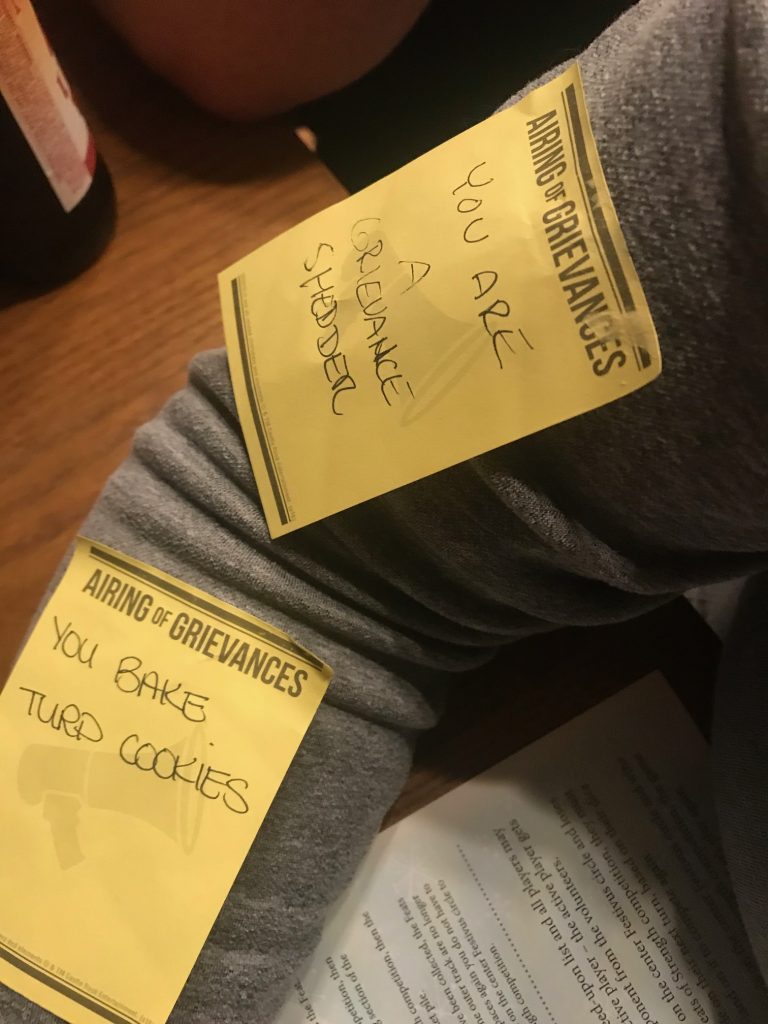
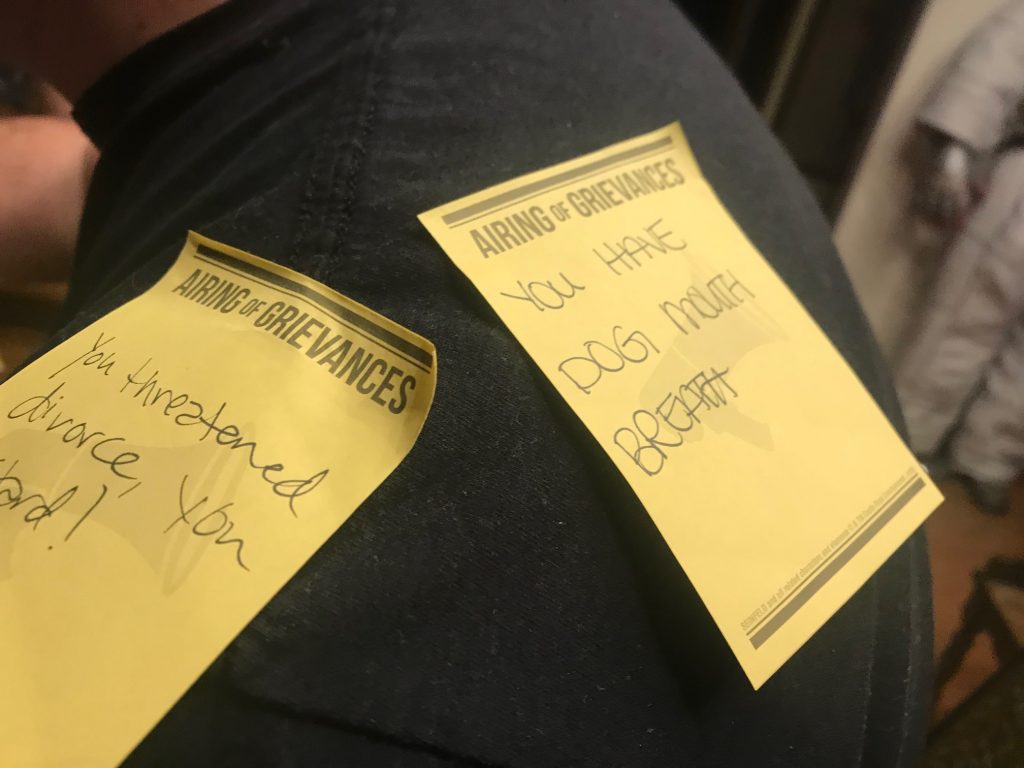
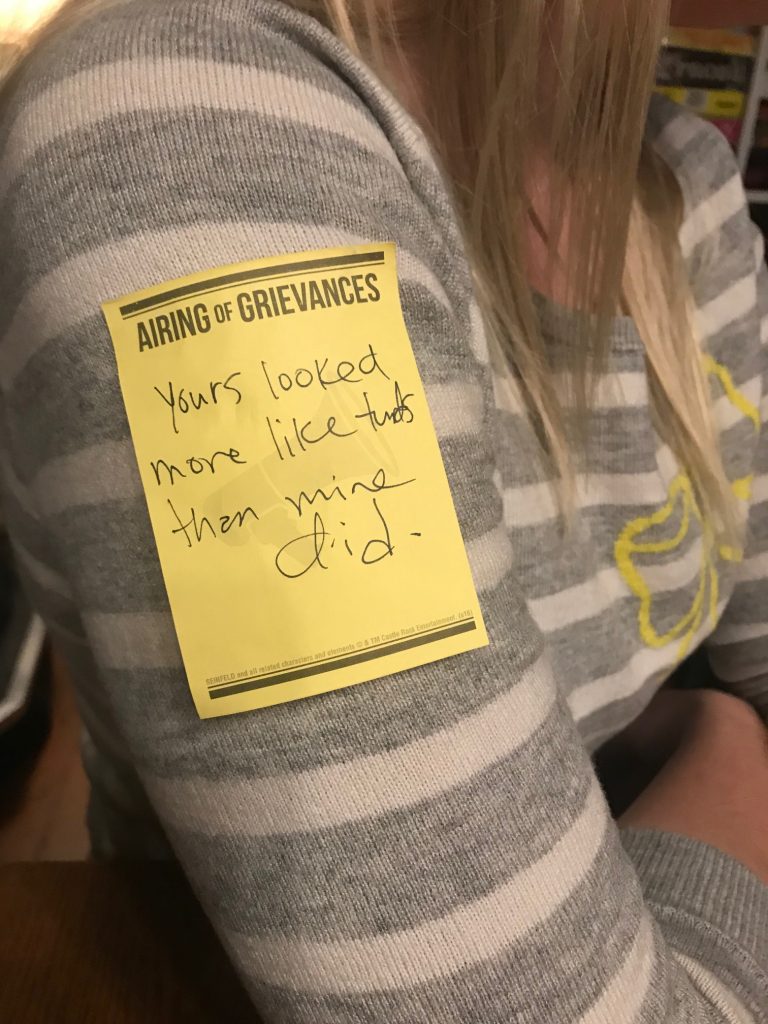
The other spaces causing a player to draw a Festivus card were mostly nothing. Bill was able to draw and keep a FEAT OF STRENGTH TICKET for free through a Festivus card, and our guest got to steal a couple of turns, but the rest were just causing us to move mildly around the board. We were just trying to roll as quickly as possible to help someone get their TICKETs and end the game, while not ever giving an inch in our actual gameplay.
When Bill got to the ULTIMATE FEATS OF STRENGTH, he (perhaps wisely) challenged me to a blind balance-on-one-leg challenge. And I lost that bet, as though it was foreseen. And Bill won Happy Festivus!
FUN FACT: Years ago, Bill and I got $40 in $1 bills, each taking $20, so we could bet each other incessantly about every single thing for the next few days or so. His favorite memory of this period is me losing a one-minute, one-legged balancing bet in a mall parking lot. I was so solid, you guys, but then this car drove by really quickly and I made the mistake of following it with my eyes. I lost my balance seconds before the time was up by falling toward the car. #noob
play or pass
Pass. Happy Festivus is plain, old roll and move in a particular theme. I can see game groups getting creative with the FEATS OF STRENGTH and playful with the AIRING OF GRIEVANCES. I can appreciate the contradiction of a consumer product like this game around the anti-commercial holiday of Festivus. But the cards are kind of nothing. I can’t imagine playing it more than once. Maybe if it came with a free makeup bag or something.
